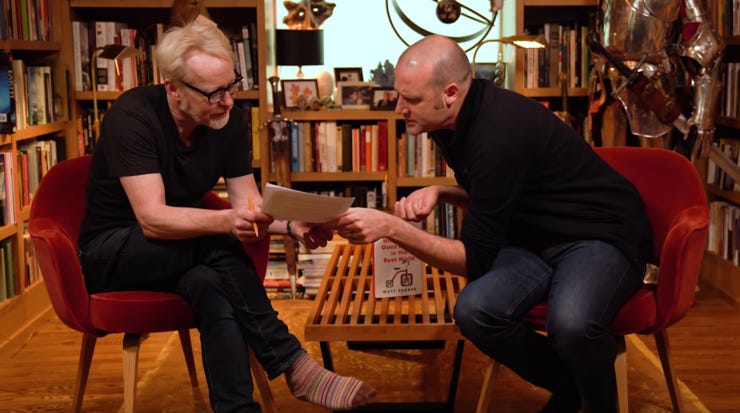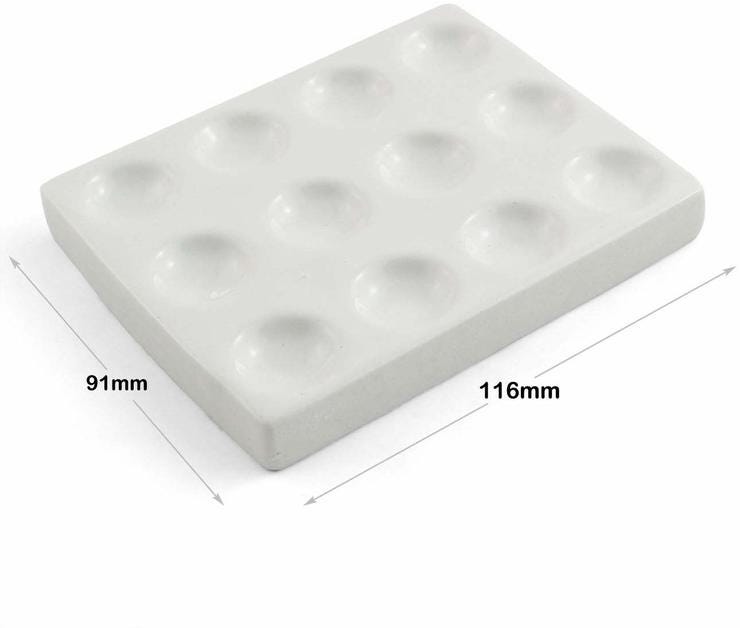Gareth's Tips, Tools, and Shop Tales - Issue #35
Colored Gels for Segmented Displays
John Park writes: "Seven (and 14) segment displays are excellent for displaying certain kinds of information, inexpensive, and fairly easy to work with using microcontroller dev boards. However, the bare LED displays can look much, much better if you put a colored gel filter in front of them. Most products that used LED displays take care of this with a piece of tinted plastic, but for DIY projects a small piece of colored gel filter (for theatrical/film lighting) works great. "
Calculating Load Safety
This week, I wrote on Boing Boing about Adam Savage's interview with mathnaut Matt Parker about his wonderful new book, Humble Pi. In the course of their wide-ranging discussion, Adam shares a great tip. In calculating the safety tolerance of a live load--something that will come under stress--take the stated load rating and multiply by 4. For static loads, 3x is fine. Matt adds that when he was studying civil engineering, they'd get students to calculate load safety and then tell them to add a zero to the result.
Making Sure a Cylindrical Workpiece is Perfectly Vertical
Emory Kimbrough: "There are numerous jigs to be found on the Internet for holding a cylindrical workpiece exactly vertical. You might, for example, want such a jig to drill down the axis of a dowel or a metal rod with a drill press. These jigs have to be made quite carefully, or the angle they’ll hold the stock at will be something other than vertical. Rather than spend time making one of these potentially finicky jigs, try this instead.
"Just trap the cylinder between two hand-screw clamps that are placed flat and at right angles to each other. One clamp prevents tilt in one vertical plane, and the other clamp prevents tilt in the other orthogonal vertical plane. The cylinder then has no freedom to do anything but point straight up."
Grease or Lube?
In this episode of BlondiHacks, about lubricants in the shop, Quinn has a good rule of thumb for when to use grease verses when to use oil. Grease is best used for areas that are harder to access because it will stay in place longer. Grease also collects material (chips, swarf, grit, etc), so in situations where there's a lot of that, use oil and change it frequently. When in doubt, use oil. In her shop, Quinn uses Way Oil 68, Mag 1 Bearing Grease, and Tap Magic Cutting Fluid as her go-to lubricants. She also recommends this type of piston-pump oiler.
Carrying Electronics in a Hanging Jewerly Bag
My friend Jade Garrett offers this really clever idea for traveling with and organizing electronics. She uses a hanging jewelry organizer. She says she's pulled this out at a hackathon to hilarious reactions.
TOYS!
Several years ago, my friend Jim Kelly, The Tabletop Engineer, gave me a 3-depression porcelain spot plate. We are both tabletop gamers and miniature painters. I immediately fell in love with these spot plates. They are used in labs for chemical reaction testing. For my mini painting, I mainly use a wet palette, but I like to use these spot plates to hold washes, effects paints, and metallics (which are best not exposed to other paints on a wet palette). If you do any sort of miniatures, scale modeling, dioramas, or any sort of crafting where you are using small amounts of paints, check these out as a possible worthwhile tool. I use mine almost daily.
***
Gareth’s Tips, Tools, and Shop Tales is published by Cool Tools Lab. Check out the Cool Tools website, the Cool Tools podcast, YouTube channel, and their other two newsletters, What’s in my bag? and Recomendo.







